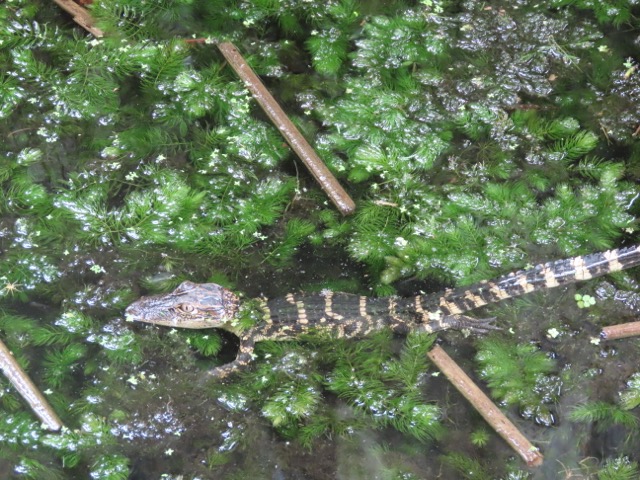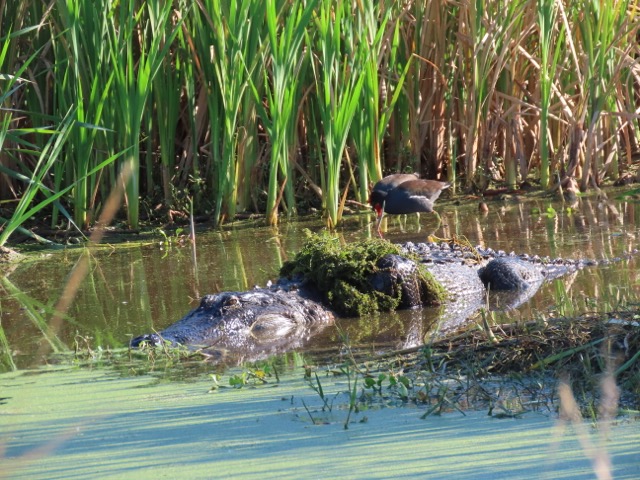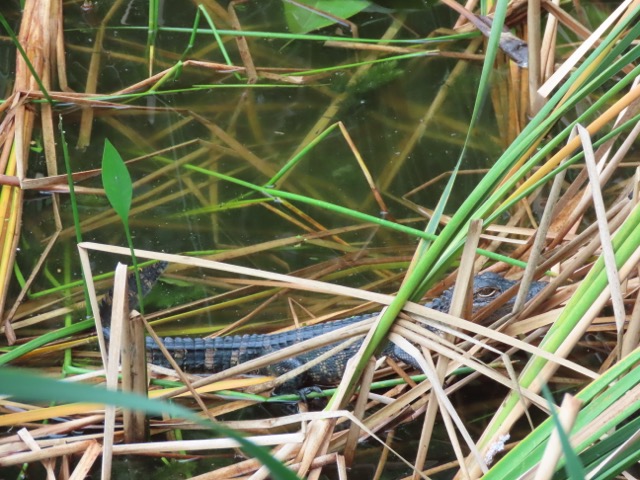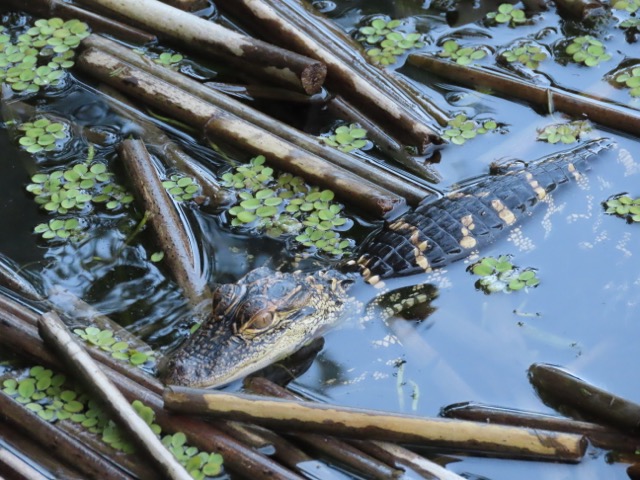Nature – Alligators
Hi campers! I hope that you are enjoying our virtual camp. As my pal Scout and I have been taking nature walks at our local parks we often see the amazing American Alligator.
Of course we observe this magnificent creature at a safe distance and Scout stays securely on her leash. This week we will explore more about this ancient reptile that makes its home in the waterways here in the southeastern U.S.
Fun Facts about Alligators
- American Alligators are reptiles. They have backbones, are coldblooded and have rough, scaly skin.
- Adult American Alligators can weigh over 1,000 pounds!
- They can be up to 15 feet long, which is about as long as a small car.
- They are the official state reptile of Florida.
- They live in freshwater ecosystems such as lakes, rivers, swamps and marshes.
- They make burrows by digging into mud banks and soils. These burrows can become shelters for other animals when the alligator abandons them.
- They can have up to 80 teeth at a time. They grow new teeth to replace worn ones. An alligator can grow 2,000-3,000 teeth in a lifetime.
- Alligators can eat fish, birds, turtles and even deer.
- They have one of the most powerful bites of any animal.
- They can eat almost 25% of their weight in one meal!
- Alligator blood is very effective in fighting bacteria and viruses. They often do not get infections when wounded in battles with other alligators.
- They can only tolerate salt water for brief periods because they don’t have salt glands.
- American Alligators don’t hibernate but they will become dormant when the weather is cold.
- Young alligators stay with their mothers for up to 2 years.
Similar Species

- Crocodiles are related to alligators but crocodiles have a longer V shaped head.
- Crocodiles are more aggressive than the American Alligator.
- Crocodiles are better adapted to living in salt water.
- The 4th tooth of a crocodile sticks out of its mouth when it is closed.
- Crocodiles are found all over the world, while alligators are found only in the U.S. and China.
- If you want to see an American Crocodile you would need to travel to south Florida where they can be found in the Everglades, Florida Bay, Biscayne Bay and the Florida Keys. They are very shy and hard to find.
- There is an alligator that lives in the lower Yangtze in China called the Chinese Alligator.
- The Chinese Alligator is much smaller than the American Alligator. They grow up to 6 feet long and will weigh up to 100 pounds.
- Chinese Alligators are extremely endangered. There are only 120 left in the wild.
Alligator Safety

- Alligator attacks on humans are rare.
- If you see an alligator watch it from a safe distance.
- NEVER feed an alligator!! Feeding alligators can cause them to lose their natural wariness of people and make them associate people with food.
- Only swim in designated areas during the daytime. Alligators are most active at dawn and dusk.
- Keep your pets on a leash and away from the water. Dogs and cats are similar in size to some of an alligator’s natural prey so they will often attract the interest of an alligator.
Observe Alligators & Other Reptiles
In Florida we are fortunate to have many opportunities to observe reptiles such as alligators, turtles and snakes.
Please watch these amazing creatures from a SAFE distance with an adult.
There are many parks with boardwalks that provide a safe, view of these animals.
There are also local wildlife drives such as the Lake Apopka Wildlife Drive in which you can view many alligators (and lots of other types of wildlife) from the safety of your car.
If you are able to watch alligators or other reptiles this week record your observations in your nature journal.

Here are some questions to think about:
- Where was the animal?
- If it was in the water how much of its body could you see?
- Was it using any plants to camouflage or rest on?
- Was it interacting with other animals?
- How close were other animals to the animal that you were observing?
- How were the other animals behaving? Were they moving away or being calm?
- If the animal you are watching goes under the water, how long did it stay submerged?
- Did the animal you observed eat anything?
- Draw sketches or take photographs of the animal you observe.



